Fairly productive February, given it's the shortest month (even with the little bonus this year). Well, I say productive, if productive can also mean "played and wrote about a lot of games". I'll have to check with Merriam-Webster. (They still haven't gotten back to me about "explormer" yet.) We introduced a new feature on the WonderSwan I'll probably return to a few times until I hit an unholy pentafecta (see Merriam and/or Webster? I know difficult words. Call me an obsequious charlatan, will you?) of five Digimon games; my other regular features are still going strong-ish; and I managed to squeeze in a whole two big high-profile games between the many indies and retros and in so doing reduced my backlog from "catastrophically large" to just "monstrously large". High five, me! Hell ye- huh? How the hell did I miss? Oh, right, the drinking.
Next big game for March will be... hmm, I just realized my "35 in 35" Final Fantasy list is out of date. Might have to address that. Comin' after you, Chaos.
Game of the Month: Super Mario Bros. Wonder

It's no surprise (to me, at least) that the new Mario game was also my favorite of all those I played this month. I love crushing turts (perchance) as much as the next paisano but at the same time what keeps me coming back to these games is the sheer amount of creativity each new Mario squeezes into every square inch of its level design, to the extent that it'll take the time to program in some brand new mechanic or an enemy with a specific type of behavior and have it only exist for that one stage alone. Super Mario Bros. Wonder goes one step even further by allowing you to take some of these mechanics with you: the badge system gives you access to a whole bunch of extra skills in addition to passive boosts (sadly, you can only have one equipped at a time) that can absolutely transform your approach to any given stage. I think my favorite was the vine whip that acts just like the horizontal grappling hook in SteamWorld Dig 2; if you wanted you could probably just waltz through the whole game with it alone, though it obviously works best with vertical levels or those with a lot of solid walls to hook onto. Even the passive badges have serious consideration put behind them: one sprinkles !-blocks around levels like those generated by the Switch Palaces of Super Mario World, and it always astounded me how worthwhile an investment it was to keep that badge equipped as I'd see those blocks everywhere covering pits, blocking enemy-spawner pipes, or dispensing useful power-ups at opportune moments, and I wouldn't be surprised if large chunks of every level were designed with the !-blocks in mind. It's fine to focus on the unpredictable level design variety, the amount of bespoke challenges big and small in its non-uniform length stages, those chatty flora, and the madness that unfolds whenever you pick up one of its Wonder Flowers—and how great it is that the Mario universe is experimenting with psychedelic drugs again? Feels like it's been far too long since the halcyon days of "Touch Fuzzy, Get Dizzy"—but as a gameplay delivery service Super Mario Bros. Wonder has so much happening further down on a subtle level that can be easier to blank on when you're singing its praises to others. I'm just imagining what a Mario Maker 3 with the same specific badge-mandated system as all those expert badge challenge levels could offer to creative armchair designers.
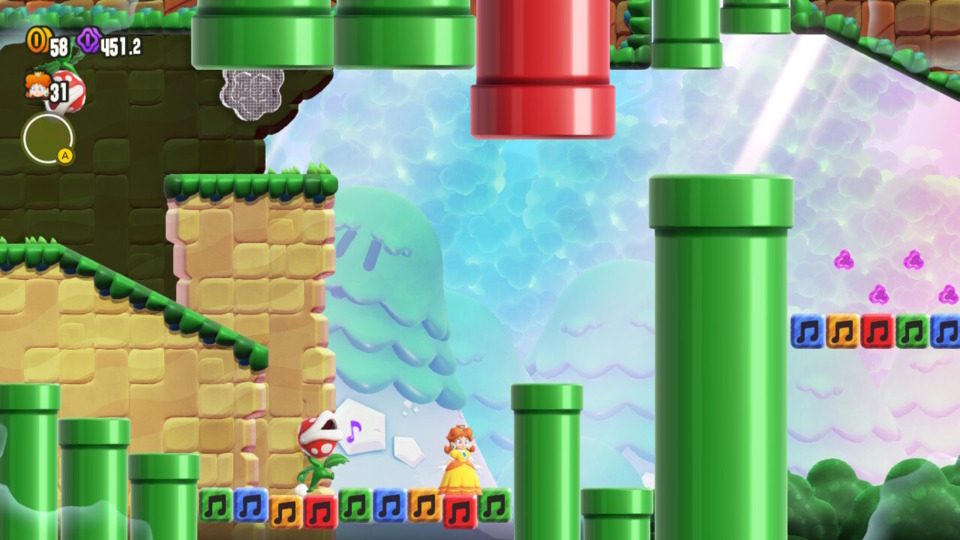
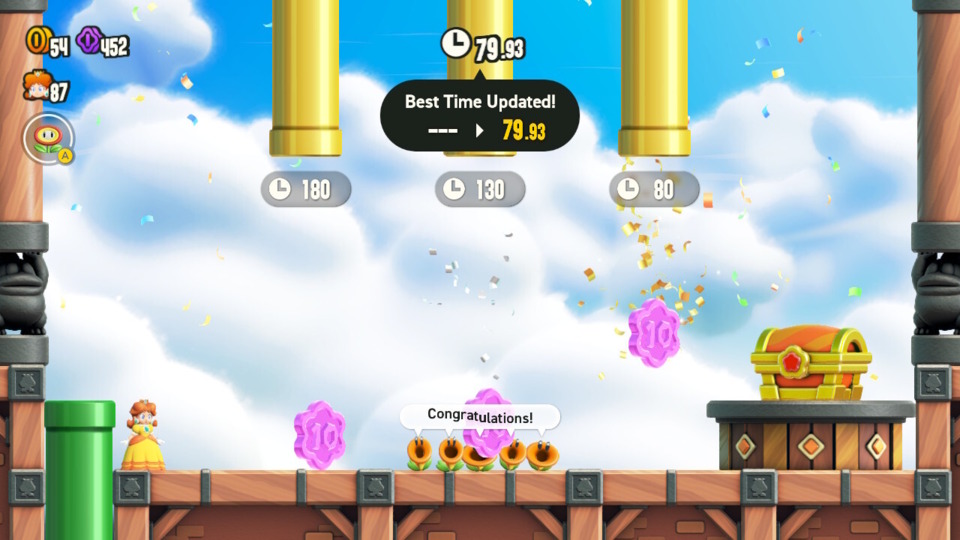
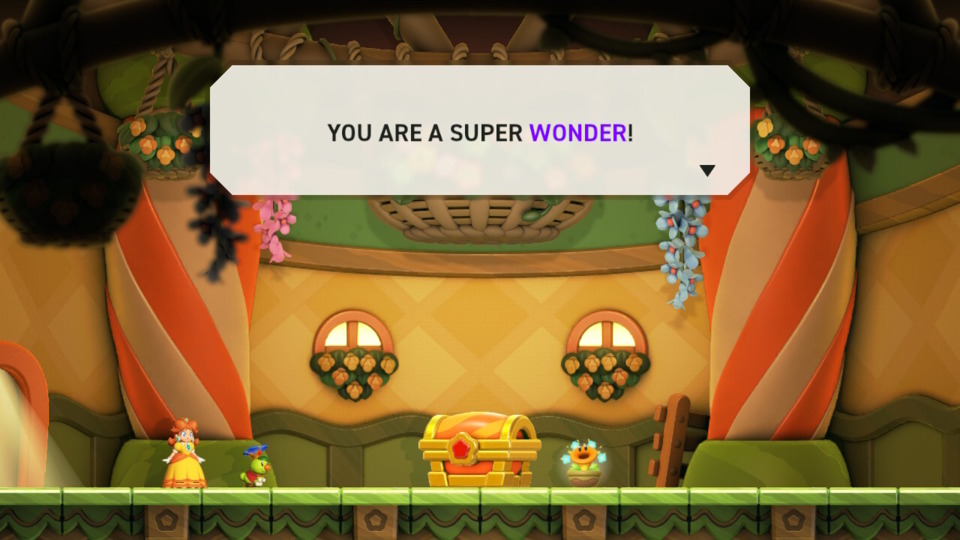
What soured the experience a little, as it has in every Mario game since maybe around 3D World, is the post-game super challenging gauntlet, and the reason these things are always super challenging is because there's barely any checkpoints and it's really just an endurance contest to see how many times you want to keep repeating the same 1-2 minute sequence for another opportunity to hit your head against the tougher next one. The first time I finally beat the Final-Final Secret Course I realized I missed the flagpole top by inches (I was invisible at the time, in my defense) and that in order to get the super secret final reward I'd have to replay all ten of its consecutive sequences again. And I did. Twice. It's good that it was the last level because I was thoroughly done with this game after that whole sorry episode was over. I wonder why the Mario devs feel like they need to hold back 100% to all but the most determined individuals? Don't get me wrong, the Secret World levels of Super Mario World were no picnic either, but they still didn't feel the need to make things artificially difficult by depriving you of sufficient checkpointing. Checkpoints exist for two reasons: it makes the game easier, sure, but also makes it far more palatable as you're repeating less of the content over and over ad nauseam. Anyway, rant over. Game's still fantastic by any practical metric and it's only when you compare it to its older siblings and their lack of insecurity about how challenging they need to be that Wonder feels anything less than a modern paragon of the genre. (Rating: 4 out of 5.)
Darling Indies and Other Gaming Tomfoolery
God of War: Ragnarok
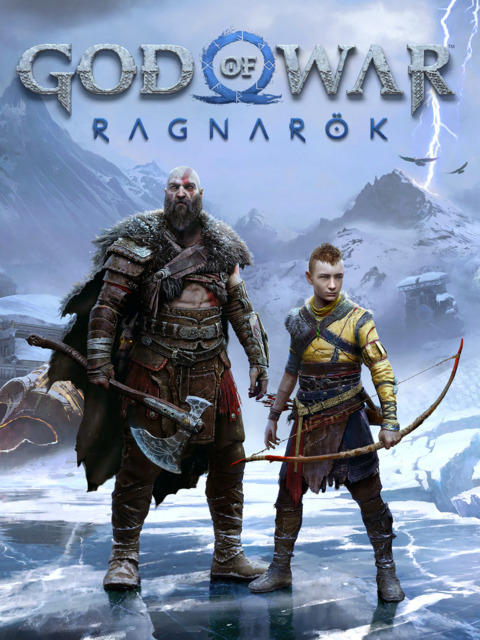
I'm making my way through the few big Sony exclusives left—and given recent news, I don't expect we'll see too many more in the near future—and this sequel to the 2018 God of War reboot, that takes the very angry Greek man who can't get a gyro the way he wants it and transplants him into the great snowy north of "Scandinavia-ish" to contend with some very un-Marvel Aesir and Vanir, was definitely a game I had been anticipating playing even before its 2022 release. Granted, I've recently been less attached to these massive-budget, massive-sized, open-world games that still remain the only AAA single-player game anyone makes any more, but I do still like this particular franchise. God of War: Ragnarok's exploration and storytelling is generally superb, especially the smaller incidental stuff as you walk around and the characters converse to fill time between loading areas (playing this on a PS4, it sure does feel like Kratos and co. spend a lot of time crawling or sidling through cracks, or strolling around Yggdrasil's branches until the next realm opens its spectral doors). There's been a huge expansion in the number of lore-apropos characters that show up to deliver exposition, offer side-quests, or otherwise shoot the shit with our hero team and I'm glad to see also that they switch around your protagonist and his companion more than a few times as the game proceeds for a refreshing change of pace. I even like the villains: this Thor's a boorish, divided drunkard less than pleased about his current lot in life and almost uses violence as an escape from his awkward domestic issues, while Odin's even more of a trickster than Loki and played with a perfect amount of mean, sarcastic derision by former West Wing staffer Richard Schiff. They even gave Atreus two love interests, which is honestly two too many for that little twerp. Given the saga-sized length of the game, easily the match for many JRPGs I've played of late, the characters have plenty of time to grow on you as well as develop on the redemptive arcs they began in the previous God of War. Thoroughly impressed with both the presentation and the parts where you're just roaming around figuring out how to reach and open puzzle-locked chests or hunt the skies for where Odin's many Mountain Dew-colored raven spies are hiding.
The combat's still really meh, though. In theory it's dynamic and exciting as you juggle a hundred different moves to suit the enemies you're fighting, but in practice it's a deeply annoying chaotic mess of a system that feels like Dark Souls if you were in permanent fat-rolling mode and had a whole bunch of elemental facets and colored circles to track. Enemies tend to teleport short distances just so their attacks, once flailing randomly in mid-air due to what look like some very expensive and elaborate animations, now "retroactively" appear to have accurately aimed at you as if you were having a showdown with an online opponent and at least one of you had terrible lag. Healing between battles is a rare privilege, and thus you'll enter so many fights with a sliver of health left looking for death just so you can start that battle again in earnest with a full bar (not like there's any penalty for dying anyway, so why they don't just regen after battles is anyone's guess). Stats make a huge and appreciable difference when it feels like they probably shouldn't given this is an action-adventure title that relies on skill, like parries and dodging. The one good thing is how easily you can bounce between melee and ranged while in the thick of things, dispatching one up-close opponent before quickly switching modes to take down its ranged friend some distance away. Yet it's perplexing that a game with this high a budget that's a sequel on top of everything still has a combat system this sticky and ungainly. I struggled to tolerate the previous game's combat shortcomings long enough to complete its little valkyrie side-quest, but I've no idea if I'll have the same patience to pull that off again here with its numerous superboss "berserker" encounters. Yes, I'm sure I'm missing some nuance or other that'll make the combat considerably more palatable, but the game has a thousand different systems in it; I feel like I'd have to open up a grazing animal and stare at its intestines long enough to divine the arcane solution to make these fights less sucky. And no beast deserves to die for that.
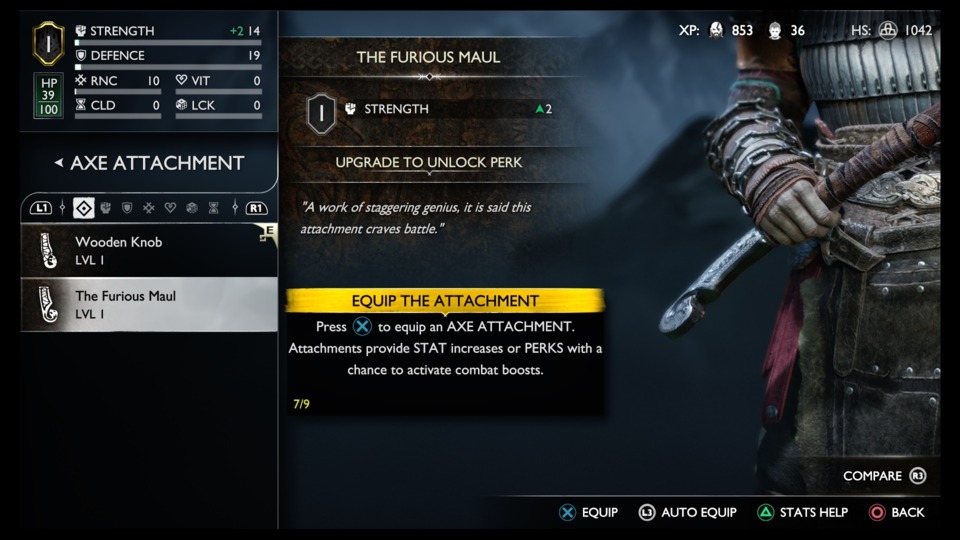
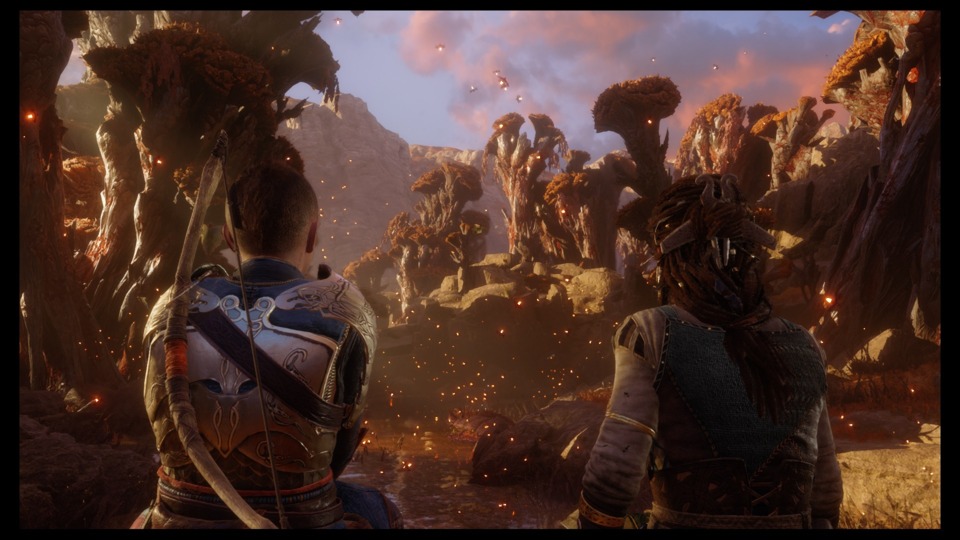
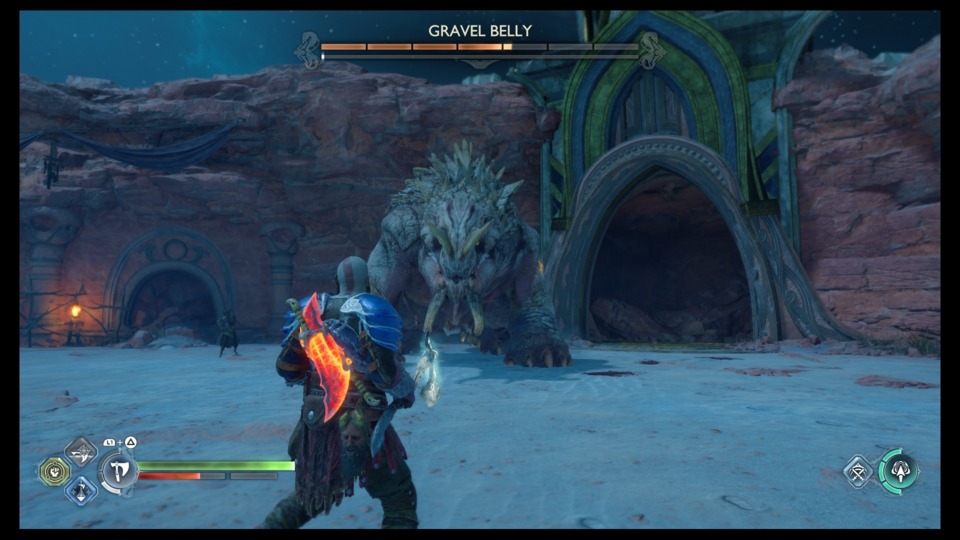
But hey, we have a mad Viking writing poetry about other Sony first-party games and a talking squirrel voiced by ProZD. So it's not all bad. In fact, outside the combat, very little of it is bad at all. If I had to point to one more issue it's that it did make me think about death a lot; specifically, the death of my PS4 which had a whale of a time running this thing while doing its best (and, I have to give it to 'em, accurate) impression of a jet engine that just ate a whole flock of migrating geese. (Rating: 4 out of 5.)
WonderSwanning, Mega Driving, and Sixty-Forging Ahead
I now have three retro gaming features now, which I suppose is my own fault for being too cheap to buy anything new. The WonderSwan is a fascinating little guy: the missing link between the Game Boy Color and the Game Boy Advance, released between the two when I guess Bandai figured there was a gap in the market. Since Bandai mostly trucks with anime tie-ins that have limited international recognition (or appeal) they didn't think to release it outside of Japan. Either that, or the GBA torpedoed any plans they might have had cooking. I spent a brief amount of time with five randomly chosen games across both the standard black & white and color models, with Flash Koibito-kun—a puzzle game where a little ninja cupid helps a dude unlucky in love—being the highlight. I'll continue to build that list over this year, though I might not settle into a monthly schedule just yet.
What will remain monthly, at least until November, are the Mega Archive and 64 in 64. This month's Mega Archive had one banger in Shining Force II, which was yet another reminder to play it at some point (I picked it up on Steam a ways back); the memorable Haunting Starring Polterguy with its then-unique premise; and an unfortunate amount of sports games (they always pop out of the woodwork around autumntime). The 39th Episode of 64 in 64 found us entirely unable to avoid the ubiquitous Midway Games with both games having some relation to the western arcade giant: Gauntlet Legends and Midway's Greatest Arcade Hits Vol. 1. Neither were objectionable choices in the end—there are many more Midway games I'd be less eager to try—and while I'd probably suggest finding other ways of playing the original arcade games they're based on, both now occupy semi-respectable mid-table placements in the overall ranking list. (At some point I'm going to have to separate that list into concrete tiers to give people a better impression of what's great, good, whatever, and worth avoiding.)
By the way, your hint for the next 64 in 64 duo is as follows: Two extremely Japanese games, one of which I'm fairly sure is the only game of its genre for the system.
Oh, also, I've finally updated the three most recent "GOTY (Adjusted)" lists as of the end of 2023. 2021 in particular saw a significant amount of reshuffling—including a new number one—though I've not yet played enough of 2022's offerings to work on that year's GOTY Adjusted list yet (that'll definitely change by the end of 2024 though; and who knows? I might even have a top ten for 2023 by then).
The "Indie Game of the Week" of the Month: The Procession to Calvary (Joe Richardson, 2020)
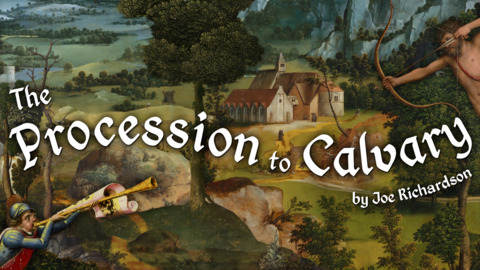
Kind of a low-key February, moving through a few of the obscurities I'd been sitting on for a while in the ol' Steam library (and, more recently, a whole lot of EGS freebies too) but I've splurged quite a bit this past month on bundles so I'm back to being spoiled for choice for future IGotW entries. What's wild is that I have thirteen explormers on deck: no idea when I'll get through them all but it's a fortuitous problem to have. Of February '24's four Indie Games of the Week my favorite would probably have to be Joe Richardson's Renaissance-art-inspired shaggy dog story of a graphic adventure game, The Procession to Calvary (#357), in which a bloodthirsty knightess embarks on a quest to murder the only man it would be morally OK to butcher, at least according to the kingdom's new ruler (and naturally the target would be the kingdom's previous ruler, now deposed). As an adventure game it's fairly straightforward and only starts getting a little complicated towards the end with the final scavenger hunt, but the goofs and the striking art style do much to elevate the totally fine gameplay.
The rest of the month's offering were a, uh, jumbled pouch. A heterogeneous haversack, if you will. Golf Club Nostalgia (#355) had an intriguing "last remnants of humanity swirling around the drain" post-apocalyptic bleakness that sliced (or maybe hooked) through the misery with a quiet, contemplative game of golf across the scattered ruins of human civilization while listening to a nostalgia-rich radio station, though any chill atmosphere it was trying to foment was undercut by how frequently annoying it was to try to play the game seriously as a golfing sim rather than just the tone piece I think it was earnestly aiming for. An example of trying to be two things at once and not quite managing either due to the split focus; the old "bird in the hand" dilemma.
Suzy Cube (#356) was a super low-budget attempt to recreate Super Mario 3D Land/World for those of us unwilling or unable to part with the cash Nintendo always demands for their premium first-party offerings (or were already well acquainted with the game). It definitely looks like it cost almost nothing to make, but gameplay-wise it comes pretty close to the fluidity and precision of the Mario games: it's evident the developers spent much of their post-production tweaking time getting the controls down pat, and that was the right call to make.
Finally, there's Costume Quest 2 from last week (#358). Another case of Double Fine delivering on their endearing cartoon charm while sacrificing any deeper nuance or elaborate mechanics or a more focused difficulty curve that other turn-based Indie throwbacks employ to set themselves not only apart from their peers but from the older games they wish to homage, all the while also elevating the format and making a case for themselves as the next step in the evolution of the genre. On the other hand, it seems obvious Costume Quest is meant for kids and teaching them the ropes of this hoary genre by oversimplifying everything was probably more the intended goal. Still, rough to come off Trails from Zero last month and have this be the very next turn-based RPG I play; it doesn't stand a chance in that comparison.
The Bonus Indie: LEGO Builder's Journey (Light Brick Studio, 2021)
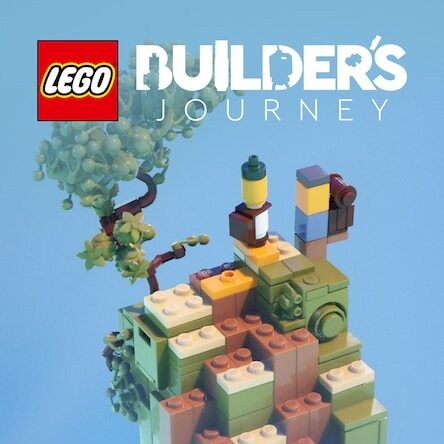
My criteria for "The Bonus Indie" (where do I even come up with these wacky names???) so far has been either games too short or too straightforward to lend themselves to the 1,000 word weekly Indie reviews like the above, or those that might not otherwise qualify. Like this one: LEGO Builder's Journey definitely has an Indie feel from its modest length to its modest aspirations, but it's still published by one of the largest toy manufacturers in the world and the presentation exhibits the sort of budget a company like that would have to throw around on vanity projects. I'm always butting heads whenever I cover an Ori or an UbiArt or something else a major publisher tosses out there in the "smaller games made for less with sometimes an archaic genre construct that collectively we have no better name for than 'Indie'" sphere as an aperitif between their huge-budget tentpoles, so this segment will be a fine place for all those big fishes in little ponds.

As for the game itself, it's... well, it's a trip. In at least two senses of the term. It follows a parent and child as they hike through the forest to their home, using bricks in the vicinity to build little bridges for themselves across rivers and up inclines. Once they get home, the parent is called away for menial labor making solar panels or sound buffering or something abstract leaving the toy castle the two were building unfinished. The child goes into the basement, crafts themself a helper robot that spits out random pieces, and chases after the parent by first competing in some kind of game show before getting lost in the innards of a massive factory, one that eventually meets up to the mobile platform the parent is working on. The factory starts exploding due to the child's tinkering and the two pursue one another through the wreckage, eventually making it out via a flying machine. I'm not sure if it had any greater meaning to impart, but it kind of felt like I was having a dissociative episode half its duration. The proggy jazz music in some parts didn't help. I want to say it's going for that contemplative, artsy, somewhat entry-level gameplay difficulty puzzle-platformer type of route with its simple enough building puzzles, but there were times where the obtuse nature of the presentation also bled through into what you were meant to do to progress. A few times where I thought I wasn't gleaning the right solution despite the relatively low number of moving parts was actually just the game glitching out, so that was fun. I will say it's a very pretty game and almost kinda daringly weird given the Lego license is one almost as zealously protected and revered as Mario or Disney; that Light Brick Studio were allowed to make something that felt this strange to potter around with is a merit to those wacky Danes and their love of interlocking building blocks, or whatever the non-generic name is for Lego. Otherwise I just thought it was kinda whatever. (3 out of 5.)
The Weeb Weeview
Last time I focused on a trio of anime shows I've been watching that seem to be the big headliners, at least of those that are enjoying their first seasons. Delicious in Dungeon, Frieren: Beyond Journey's End, and Solo Leveling have all been steadily improving since I sang their virtues last month, so I've definitely been sticking with them. This month I'm changing tracks slightly to talk about three isekai shows that might be a little more divisive, disposable, and/or obscure: isekai's now one of those genres that have become far too preponderous for most anime fans to follow too closely, instead looking for whatever few can break out from that crowd as legitimately great shows and leaving the rest to us hopeless isekai freaks. Your mileage may vary with the following three choices, but they're all shows I've been enjoying for different reasons.
Villainess Level 99: I May Be the Hidden Boss but I'm Not the Demon Lord
Coming from the Japanese light novel school of giving one's properties overly literal titles, Villainess Level 99 follows Yumiella Darkness, what was at first a side-character from a highschool fantasy otome game (those where a female protagonist has multiple male romantic conquests to pursue) and now host to a reincarnated spirit from Japan. In the original script, Yumiella was an underling of the local mean girl who inexplicably was revealed to be the secret superboss of the game: one considerably more powerful than even the Demon Lord antagonist. Knowing her fate is to die at the hands of the heroine and her harem, Yumiella decides to make more of an effort to ingratiate herself with the student body and avoid "evil" decisions that will push her towards that bad ending. Unfortunately, she's as socially inept as she was in her previous life and her sheer overwhelming power, her affinity for creepy dark magic, and her obliviousness concerning her abnormal hobbies leads her to be misunderstood as a monster more often than not. In fact, half of the student body seems convinced she's the Demon Lord herself. But, yeah, I guess you could get most of that from the title.
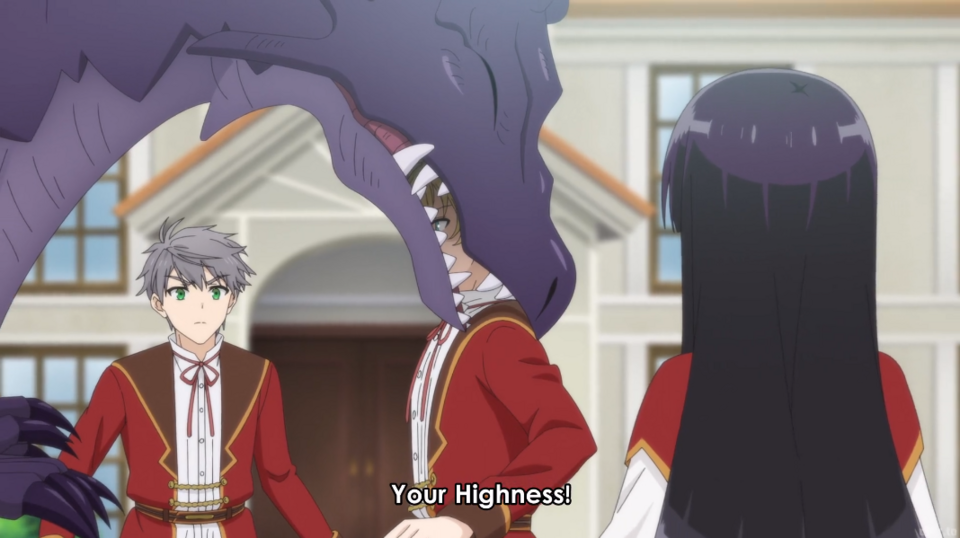
There's been a few isekai looking to subvert the whole "protagonist is OP" trope—The Eminence in Shadow is a notable example, and obviously there's One Punch Man and Mob Psycho 100 before that—but this one's fun because it's couched in a Degrassi/Harry Potter teen romance format and follows relatable themes of being unable to fit in with the social cliques and accidentally poisoning your own reputation through any number of very public faux pas (which is something Harry Potter's author knows well enough too). Yumiella's a blunt character who reveals nothing of her emotions and thoughts to the outside world, though as the protagonist we viewers get plenty of both from her inner monologues as she flops through one misjudged social encounter to the next. Her immediately making an enemy of the game's romantic conquests by effortlessly blowing them all away in the disciplines they're the proudest of—the supercilious mage, the meathead warrior, and the haughty prince—is always funny and would indicate that the romantic content of the original game won't be something she'll get to enjoy in her side-character role, but the provincial noble's son Patrick who has a good head on his shoulders and a more understanding attitude might prove to be a better match for this stone-cold monster-massacring goddess. Tonally it's been an interesting mix of HS shoujo and fantasy shounen so far, though its story has been spinning its wheels a bit for the sake of setting up more of an episodic sitcom format. I also can't forget to mention the banger OP track from Mayu Maeshima: she performed the (equally great) OP for Isekai Ojisan too and I dig her deep singing voice and cool attitude.
The Wrong Way to Use Healing Magic
Ken Usato is a self-professed "regular guy" who admires, along with the rest of his school year, the beautiful and brilliant student council president Suzune Inukami and her handsome vice-president Kazuki Ryusen: two exceptional people who feel like higher beings compared to the rest of the school. However, unexpected circumstances affords Usato the chance to befriend both of them, discovering that they have their own insecurities and down-to-earth personalities that make them far more approachable than they first appeared. However, later that same day all three are whisked away to a fantasy world to learn how to be heroes: Usato assumes he was a stray caught up in the summoning spell by accident until he discovers that his magical aptitude was for the rare healing school of magic. This immediately makes him the target of the intense former knight commander Rose, another healer, who then puts him through the most arduous training imaginable to make full use of his magic. Specifically, physically pushing oneself way beyond one's limits while constantly healing any muscle damage and fatigue that occurs. Despite growing buff in mere days, Rose is adamant that Usato only join her as a "Rescue Team" member: those that act as battle medics that are required to charge into the front lines in a non-combat capacity, with the intent of the training being to keep him alive.
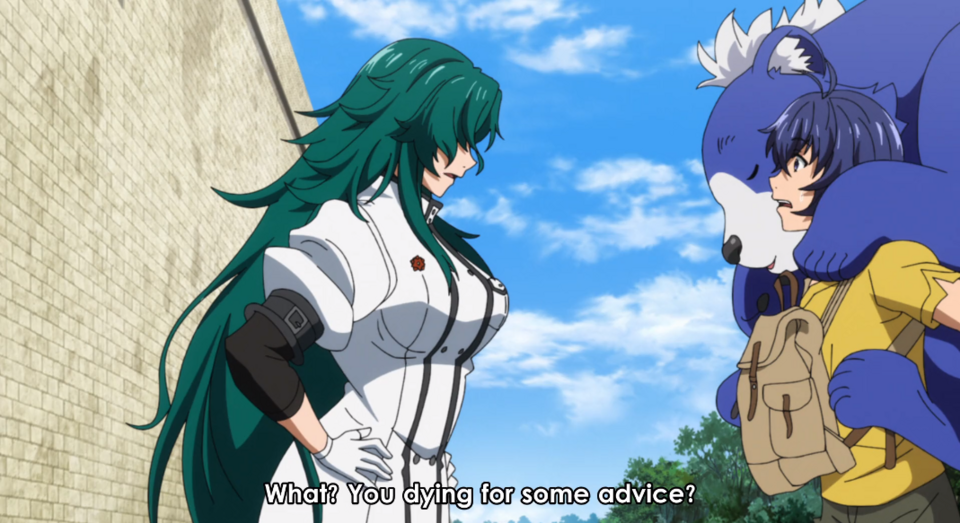
The show's arc is now poised to get into the big war the human kingdom has been preparing for against the demon armies (there's some tragic flashbacks of Rose's to get through first) so the sort of comedic tone it's been displaying so far might be taking a backseat to some battlefield drama before too long. It's not been that "huge" of a show so far in terms of its set-pieces and animation: the slower pace and levity suggests it's a bit more focused on characterization. Usato's an unassuming guy thrown into a situation he's struggling to deal with, but is good-natured enough not to let it change or overwhelm him (though he's been growing more of a backbone as he gets ripped from all the intensive training); his two peers are genuinely nice people who have been using this little adventure to escape their own crushing responsibilities and take a breather, though other responsibilities have taken their place (I particularly like the female lead Suzune, who is a bit of a secret otaku and the only one of the three to be stoked about the current situation); Rose is just a straight up badass hurling entire trees at people with a cold, samurai like attitude; and we have at least two cute mascots now including a large blue grizzly cub very particular about who gets to pet him that Usato has to carry around everywhere as part of his training. It's not the kind of show that keeps you on the edge of your seat (at least not yet; this war arc might prove otherwise) but it's solidly written and animated and one of my low-key faves for this season.
My Instant Death Ability is Overpowered
Another isekai playing around with the "OP Protagonist" trope, though in a slightly more unexpected direction. The lethargic and video game-obsessed student Yogiri Takatou is isekai'd while on a field trip, along with his entire class, by a woman announcing herself as a Sage: a human whose prodigious magical powers has made them something closer to a deity. She immediately kills the teacher and bus driver, adults too old to receive her blessing, and gives all the other students a magical infusion complete with distinct abilities and status screens to peruse and challenges them to become Sages like herself, or else be drained of their magic potential as living batteries for the world's elite Sage class. The few students that escape this "gift" are abandoned by their fellow classmates to be bait for an approaching dragon, including Yogiri. However, Yogiri does have a unique ability of his own: he simply has to wish a being to perish and it does, instantly. Using this skill, he defeats the dragon and escapes the bus with the only other survivor of the "non-Sage candidates", the plucky straight woman character Tomochika Dannora, and works to catch up with his double-crossing classmates while getting caught up in any number of incidental struggles along the way.
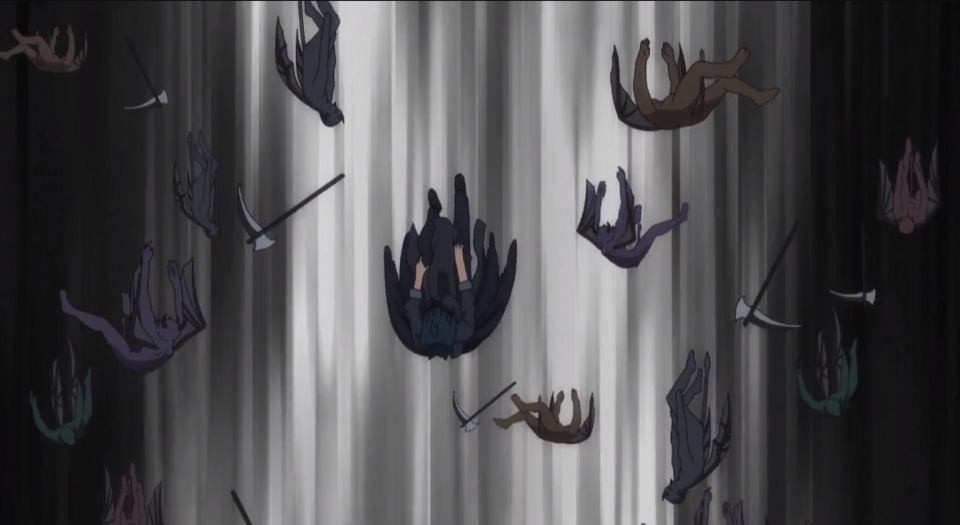
I read the manga of this first and was floored by some of the big twists around the extent and source of Yogiri's powers and the more parodic tone of the story, which tosses in characters that greatly resemble those from other major isekai properties and have them be arrogant, murderous dickwads that Yogiri is invariably forced to put down in self-defense. The amusing deadpan nature of the "nope, not dealing with this, die" response to every scenario threatens to become old quick, but the show has the same unpredictable energy as One Punch Man where the set-up is sufficiently different each time that it doesn't even matter that you can see the punchline coming from a mile off. However, the show—compared to the manga at least, I've no clue about the original light novels—seems to be moving a mile a minute, making it hard for many of the goofs to land properly. After all, it's funnier when a villain has a huge amount of build up before they're summarily dispatched in the blink of an eye. I really love the material though, as it somehow manages to merge a standard overpowered isekai comedy with the online spookfest SCP Foundation of all things (let's just say Yogiri was extraordinary long before he got isekai'd), and displays a very refreshing hostility towards the trope-laden isekai genre. I've been seeing some folks turn around on the show (in a positive way) after the revelations of the seventh episode, which is starting to more strongly hint at just how terrifying an existence Yogiri Takatou might be.
Not isekai but isekai-adjacent—shout outs to The Unwanted Undead Adventurer and Shangri-La Frontier. The former's about a kind if physically unimpressive veteran adventurer who is killed by a freak encounter with a powerful dragon and is mysteriously revived as an undead still retaining his memories and personality; like The Wrong Way to Use Healing Magic it has a more gentle pace and delves into character interiority more often as well as the daily struggles of adventuring, but the protagonist's design is kinda cool and it's been hinting towards a darker tone of late. The latter's a MMORPG-based show carried over from last year about a dude who pushes himself to complete shitty and broken games for the sake of the challenge and is able to transfer those skills to a globally-popular MMO with absurdly difficult "unique monster" fights that no-one has been able to overcome. The manga was said to have been the inspiration for Elden Ring's own magnanimous champion "Let Me Solo Her", and the show's vibe is very similar to their fearlessly taking on the strongest bosses with minimum armor and stupid headwear. It just finished an arc involving fighting one of these unique monsters, an undead robot samurai, and it had some of the best animation I've seen in an anime lately. Also two more banger OPs: that's a list I'm going to have to put together towards the end of March's Weeb Weeview.
Speaking of which, the theme for the shows I'll talk about there will be as follows: Cute shit. Just, y'know, cute shit. Even I, the legendarily unflappable Mento, need the emotional equivalent of a colonic irrigation from time to time by watching cute animes do the darndest things so look forward to hearing about those. Anyway, enough out of me for now; It's time to punch Chaos while listening to Sinatra, or whatever that game's about (I still haven't been able to figure it out).
Log in to comment